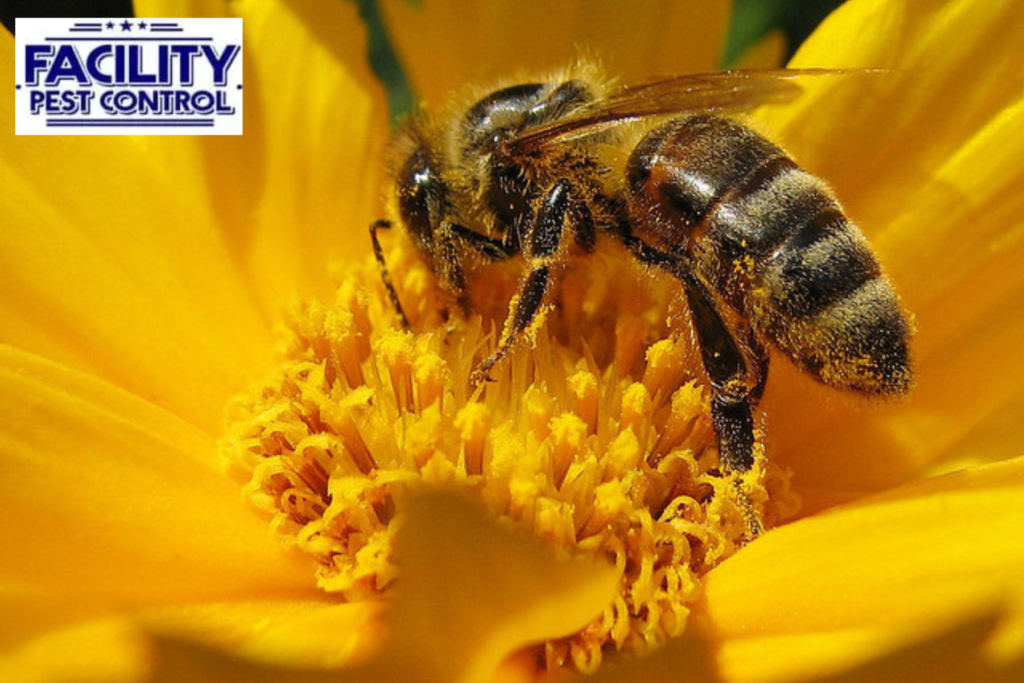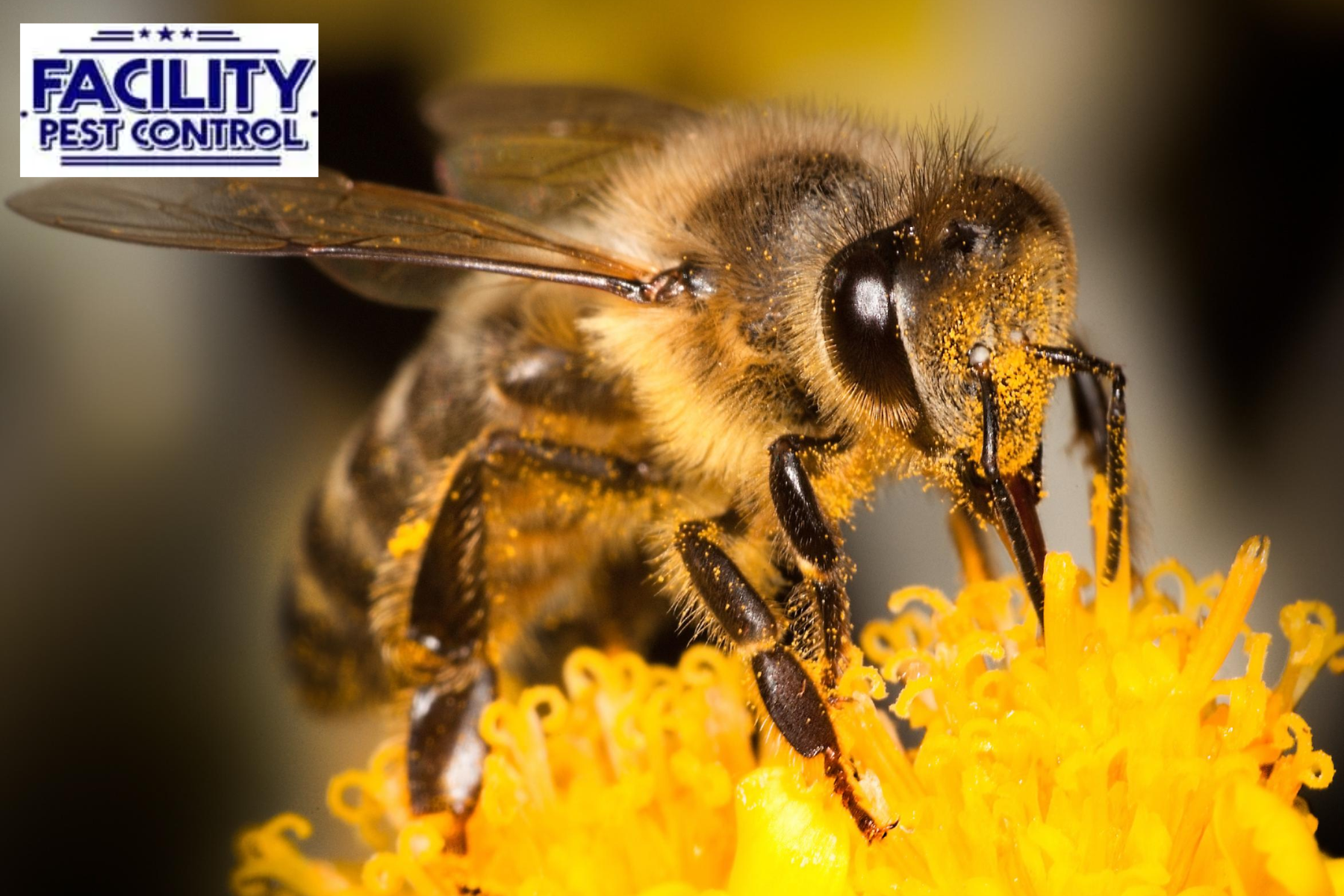Spotting bees or wasps near your home or business can quickly shift from a minor concern to a significant safety issue. While these flying insects play an essential role in the ecosystem—particularly bees, as pollinators—they can become a danger when their nests are located too close to human activity. Understanding what to do when you encounter bee or wasp activity in or around your space is crucial for safety, prevention, and effective control.
If you’re noticing increased buzzing, nests tucked in corners, or a growing population around your property, it’s time to take action.
Recognizing the Warning Signs
The first step to managing any pest problem is awareness. Bees and wasps typically make their presence known in a few ways:
Increased Sightings
A sudden rise in bee or wasp activity near windows, doors, or outdoor areas is often a sign of a nearby nest.
Visible Nests
Wasps typically build paper-like nests in eaves, roof overhangs, sheds, trees, and wall cavities. Bees often nest in hollowed-out trees, wall voids, or attic spaces.
Buzzing Sounds
A constant buzzing sound behind walls or ceilings may indicate an active colony.
Unusual Behavior in Pets or Children
Pets may bark or paw at areas where nests are hidden, and young children may point out insect movement near the home.
Recognizing these signs early can help you avoid stings, allergic reactions, and damage to your property.
Understanding the Risk
Bees and wasps may seem similar, but their behavior and threat levels vary. Knowing the difference is key:
Bees
Bees are generally non-aggressive unless threatened. Honeybees are vital pollinators, and many species are protected under local regulations. However, their presence inside walls or attics can lead to structural damage and unwanted honey buildup.
Wasps
Wasps, including yellow jackets and paper wasps, are more aggressive and territorial. They’re known to sting multiple times and often defend their nests forcefully. Their stings can cause serious allergic reactions in sensitive individuals.
Interacting with a hive or nest without proper knowledge and equipment can be dangerous. That’s why professional intervention is often necessary.
What Not to Do
It’s natural to want to take quick action, especially when pests pose a risk to your family or business. However, DIY bee and wasp control can do more harm than good. Here’s what to avoid:
Do Not Spray Nests with Over-the-Counter Insecticides
These products are often ineffective and can agitate the colony, causing them to swarm.
Do Not Attempt to Remove a Nest Yourself
Even a small disturbance can trigger defensive behavior, resulting in multiple stings.
Do Not Block Off Access Points
If bees or wasps are inside your walls or attic, sealing entry points without proper removal can trap the colony and worsen the situation.
The safest and most effective course of action is to contact a professional pest control provider trained in dealing with stinging insects. Bee control requires careful attention, and it’s always safer to rely on experts.
Safe Steps You Can Take Right Away
While waiting for professional assistance, there are a few precautionary steps you can take to minimize risk:
Keep Your Distance
Avoid the area where the bees or wasps are most active. Warn family members, employees, or guests to steer clear.
Seal Food and Drinks
Stinging insects are attracted to sweet substances and proteins. Store food indoors and keep trash cans tightly closed.
Close Windows and Doors
Prevent further entry into your space by ensuring all openings are secure.
Identify the Location
Take note of where the activity is highest. This information will help professionals assess the situation faster.
How Professionals Handle Bee & Wasp Removal
Professional pest control providers follow a structured process to remove bees or wasps safely and efficiently. Here’s a breakdown of what to expect:
Inspection and Identification
The technician will inspect your property to identify the species and locate the nest. This is critical, as different insects require different treatment methods.
Risk Assessment
Safety protocols are followed to ensure the removal process does not put people or pets in harm’s way. If bees are present, professionals will also determine whether the species is protected and if safe relocation is possible.
Strategic Treatment
Depending on the location and severity, professionals may use targeted treatments to eliminate wasp nests or remove bee colonies safely. If bees are involved, they may coordinate with local beekeepers or removal specialists to ensure ethical relocation.
Preventative Measures
After the removal, pest control experts will recommend sealing entry points and suggest long-term prevention strategies to reduce the chances of future infestations.
Long-Term Prevention Tips
After dealing with bees or wasps once, most property owners want to make sure it doesn’t happen again. Here’s how to reduce your risk of recurring infestations:
Seal Exterior Cracks and Gaps
Small holes in siding, soffits, and rooflines are common entry points.
Keep Trash Bins Clean and Covered
This limits food sources that attract wasps.
Limit Standing Water
Like most insects, bees and wasps need water to survive.
Trim Back Vegetation
Overgrown shrubs and trees close to your building offer ideal nesting spots.
Schedule Regular Inspections
A seasonal inspection from a pest control professional can help spot early signs of activity.
When to Call for Professional Help
If you’ve seen multiple bees or wasps in or around your property, suspect a nest, or have experienced stings, it’s time to bring in the professionals. Immediate action not only protects the people in your space but also helps maintain your property’s integrity.
Bee and wasp problems can escalate quickly, especially in warm weather. Even if you’re unsure about the severity, it’s always better to consult with experts who can assess the situation and provide clear, safe solutions. Bee control professionals are best left who understand the risks and can take the necessary precautions.

About Facility Pest Control
Facility Pest Control is a trusted provider of pest management services in Van Nuys, CA, serving residential and commercial properties across the region. We specialize in safe, effective solutions for a variety of pests, including bee and wasp control. Our team uses environmentally responsible techniques and Integrated Pest Management (IPM) practices to eliminate infestations and prevent them from returning.
With a focus on safety, professionalism, and long-term results, Facility Pest Control ensures peace of mind for homeowners and business owners alike. Whether you’re dealing with a wasp nest under the eaves or bees in the attic, our experts are here to help. For bee control services, visit our website at Facility Pest Control.




